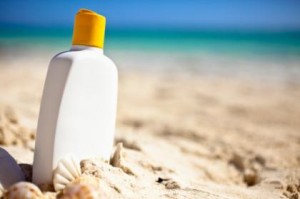It’s summer time and with the longer days and much-anticipated sunshine comes the need for protecting your skin from sun damage. One of the easiest to do that is by using a sunscreen with the right amount of SPF, and the options seem endless. Here’s how to choose the right sun protection for your skin.
SPF: What It Means and Why It Matters
We hear the acronym ‘SPF’ a lot at this time of year, but do you really understand what it means and how the SPF rating of your sun protection can determine how well your skin is protected from sun damage?
SPF stands for Sun Protection Factor and is a relative measure of how a product will protect you from UV radiation (Predominantly UVB rays unless otherwise specified on the label). Products generally range form low SPF of 15 to much higher rating of up to 100 SPF.
While a Higher Spf Offers an Increase in Sun Protection, It’s Not Always a Much as You Might Think
- SPF 15 will block approximately 93% of UVB rays.
- SPF 30 will block approximately 97% of UVB rays
- SPF 50 will block approximately 98% of UVB rays
- SPF 100 will block approximately 99% of UVB rays
Broad Spectrum Sun Protection is Best
For UVA and UVB protection, look for a suncreen that states it is broad spectrum. Mineral sunblocks that contain a high amount of zinc oxide, when applied correctly, offer excellent broad spectrum sun protection. Elta MD is just one example of a reputable brand that carries mineral-based, broad spectrum sunblocks.
If you’ve avoided mineral-based sunblocks out of fear that they will leave your skin looking ashy or covered in white streats, CBC offers this list of 10 mineral sunblocks that are suitable for dark complexions.
If you spend a lot of time in the water, many mineral-based sunscreens are reef-safe as well. The key is to always read the labels so you know what you’re getting when it comes to your sun protection!
Using Your Sunscreen Properly
How you use sunscreen increases the effectiveness of it as well. Most people don’t use enough, or re-apply as often as they should to be protected.
- An adult sized person should be using 2 tablespoons (or more) of sunscreen to cover all exposed skin.
- To be effective, it should be reapplied every two hours, or more if you are swimming or sweating excessively.
- Remember to use sunscreen even on cloudy days; UV rays can pass through clouds.
- Check the expiry date! Some of the compounds in sunscreen lose their efficacy over time – be sure to check that it is still within the posted expiry date on the label.
- Protect your sunscreen from the sun and heat. Extreme temperatures can also break down the compounds in the sunscreen so be sure to tuck the bottle away somewhere out of direct sun and extreme heat.
No sunscreen, regardless of the SPF, will protect you completely and it should be only a part of your overall sun protection when enjoying the outdoors. Clothing, lip balm, hats, eye protection and avoiding the peak sun hours of 10:00am to 4:00pm should all be part of your plans to keep your skin protected as much as possible.
Get out this summer and soak up the sunshine – just be smart and safe when it comes to sun protection while you’re doing it.


 Here is a list of what you don’t want in a sunscreen: (courtesy of
Here is a list of what you don’t want in a sunscreen: (courtesy of 


